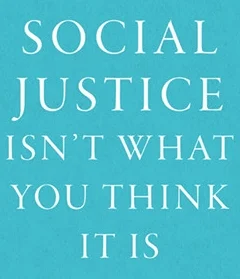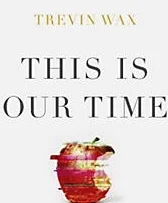The future of the church is unity across ethnic barriers. This is the image we see in Revelation 7, “I looked, and behold, a great multitude that no one could number, from every nation, from all tribes and peoples and languages, standing before the throne and before the lamb, clothed in white robes with palm branches in their hands, and crying out with a loud voice, ‘Salvation belongs to our God who sits on the throne, and to the Lamb!’” This is not a vision that should fuel ethnic division or even permit us to countenance such as the body of Christ. While we are unlikely to attain to this vision while on earth, this is what we should pursue today.
Rejecting white nationalism or white genocide does not equal a call for an “open border” immigration policy. (A common accusation against many on the right and left by those supporting white identity politics.) The United States has the right to set immigration policies that take into account the good of its citizens—this is a function of nation-states in our day, and is not inherently unjust (although it may be pursued unjustly). However, the perception of some (and some that I’ve seen who claim to be Christian) is that we must build a movement of white ethnic solidarity and ban all immigration or risk being overcome. The second is implausible, despite ridiculous claims to the contrary. The first should be anathema to Christians given our eschatological hope in a supremely diverse chorus of voices joined in worship.
Against Religious Registries
Recently someone actually went onto national television to argue for a registry of Muslim believers. Or, at least, he argued there was precedent for it. Much news can be made of this person’s relation to the incoming administration. Of greater concern for me is that such a terrible idea should never have seen the light of day outside of a condemnation of our distant past.
The person speaking was correct to note that the U.S. has a precedent for registering people. He was also correct to note that during World War II we registered and interned ethnic Japanese, some of whom were immigrants. There is a precedent for such a registry.
However, the internment of ethnic minorities during World War II is an instance of protectionist government overreach. This is a black mark on our nation’s history, not the sort of historical event we should dust off and try to recreate in the present. We should not even consider it an option, though I will engage in a thought experiment for the sake of discussion.
Let’s assume we create a registry of everyone in religion X. To do so, we have to ask ourselves how we will determine whether someone is part of that religion. Is it attendance at a worship service? Is it being born into a family that has at some point attested to being part of religion X? Is it having grown up in a nation that is perceived to be predominately filled with religion X? What happens if someone converts to another religion? How do we determine whether that conversion is authentic?
All of a sudden, the government is trying to make decisions about things that it is simply not qualified to do. Religion isn’t ethnicity, where a family tree justifies inclusion. Even when dealing with ethnicity, how much is too much? One parent? One grandparent? A brother in law? For religion, the government would have to ask a different, more nebulous set of questions.
The obvious and necessary outcome is that the government steps into the role of religious authority. Person A has demonstrated sufficient effort to be considered Christian even though he grew up in a Muslim home. At the same time, since Person B simply stopped attending the Mosque and hasn’t picked up another active religion, should he be considered to still be Muslim? Unless he eats some bacon and draws a cartoon of Mohammed? Would open sacrilege be sufficient (or necessary) to change a classification?
Suddenly, I’m catching a whiff of the Inquisition. That’s not a high point in human history, much less in Christian history. I’m also hearing echoes of the persecution of the Jews under the Nazi regime. Certainly it wouldn’t start there and it might never get to that extent, but the echoes of that horror of the persecution of the Jews should be enough to steer us clear.
So what happens when the anti-theists get hold of the government? Now we can get parallel registries of Muslims and Christians. No worries, they will just be keeping tabs on people of faith. Why? Just to keep everyone safe and ensure the government knows what is going on. And then to perhaps ensure that we don’t have people of certain faiths in certain government positions. Does this sound like a dystopian fiction? Yes, but it’s only a step or two beyond registering Muslims, which someone felt comfortable bringing up as a possibility in a TV interview.
This is the sort of thing that Christians (and any reasonable people) should speak against. It’s not a good idea. It’s not going to make us safer. It’s not going to end well. If we’re for religious liberty for some (ourselves?), then we need to hold out the same rights for all. That needs to be the principle we stand on.
The government does not have the wherewithal to regulate religion. The common good is not enhanced by the government regulating religion. Making people register their religious affiliation is not simply information gathering, it is regulating. We must keep this power away from the government.
Just a Media Overreaction?
One of the tragedies of contemporary society is the 24-hour news cycle. This creates the problem of the proliferation of interviews of people who might know someone that knows something speaking authoritatively about stuff. There is such a need to fill the airwaves that they bring people that might float the idea of something like a Muslim registry on national television. This, then, fuels dozens of hot takes (like this one), replays, edits, and discussion panels. Sometimes the furor is over nothing.
I’ll be glad to find out that this suggestion is really nothing. Unfortunately, there are some that will hear it and begin to think that such a simple encroachment on civil liberties is really worth it to prevent the explosion of another IED or another religiously driven night-club shooting. Because of the protectionist stance some (particularly whites) are taking, this will begin to sound like a good idea. Reading Twitter and some of the Alt-Right propaganda sites provides evidence that this idea isn’t just nothing.
Sometimes there is an overreaction that deserves to be neglected. The media cries wolf too often, as a rule. However, we can’t let their failures in the past prevent us from seeing problems in the present. These are issues that have the potential to take root in the minds of some in our churches and we should be careful not to let sin get a foothold.
The purpose of this post, therefore, is not to fuel the overreaction, but to offer some consideration for the ideas that are actually being floated as plausible and to encourage Christians to think about how these ideas betray the gospel (as with white nationalism) and put impartial justice in jeopardy (as with the Muslim registry). People are actually talking about some of these things as if they are good ideas. They aren’t, and we should make sure that the church is clear in standing against them.



























There’s no reason to doubt that Jesus was nailed to the cross. Ultimately, I trust what Scripture says about Jesus’s crucifixion because I also trust what it says about his resurrection. And that’s what we should be celebrating this week.